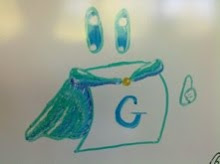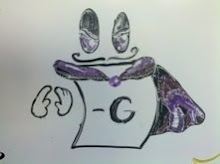Here are summaries of the first round of presentations from
Sprouts 2017!
Destiny Martin: The game of Locking Nim
Destiny presented a really cool version of Nim: Locking Nim. The only difference between this and Nim is that players cannot play on heaps of the same size as another heap in the game. First glance: this should be the same as Nim, right? After all, in Nim, two equal-sized heaps cancel out in the Nim-sum. This isn't the same here, though, because there could be three heaps with the same size, and now they're all irrelevant!
Destiny found that with three (non-zero) heaps, games are in P exactly when they nim-sum to zero and the piles have unique sizes. If they are not unique, the position is in P exactly if they're all the same size. For four heaps, the regular nim-sum-to-zero property holds for P, whether or not the four piles are unique.
Nick Paolini: Node Hackenbush disguised as a Chomp variant
Nick modified Hackenbush to create Polar Bear Plunge, a game played on a grid-graph. On one node of the grid sits the polar bear, acting as the ground from Hackenbush. Players take turns removing other nodes (ice bergs) from the graph. If another node is not reachable from the bear, it disappears too.
Nick determined formulas for all 1-by-n and 2-by-n boards, no matter where the bear is located. For other n-by-m grids (both greater than 2), all you need to know is the parity: the game is equal to * if n times m is even, and 0 otherwise!
Emilee Jurkowski: Crab & Gulls
Emilee built a variant of Queens: a game where players alternate turns placing non-threatening Queens onto a chessboard. Crab and Gulls is similar, except that Bishops (Gulls) are placed instead of Queens and they don't need to threaten each other, but instead
must threaten a separate Crab piece. A turn consists of two parts: place a threatening Gull, then move crab to any other space (not necessarily adjacent) that isn't threatened. (Both parts of the move need to be completed.) She came up with two further variants: King & Gulls (the Crab moves like a King) and Rock & Gulls (Crab doesn't move, but each new Gull needs to threaten it).
Emilee calculated the nimbers for all Crab & Gulls starting positions on a 2-by-{2, ..., 8}, 3-by-{3, 4, 5, 6}, and 4-by-{4, 5}. She also found the King & Gulls nimbers for starting boards for 2-by-{2, .., 11}, 3x{3, ... 7}, and 4-by-{4, 5}. For Rock & Gulls, she realized that this game is just equivalent to Nim with 4 heaps.


